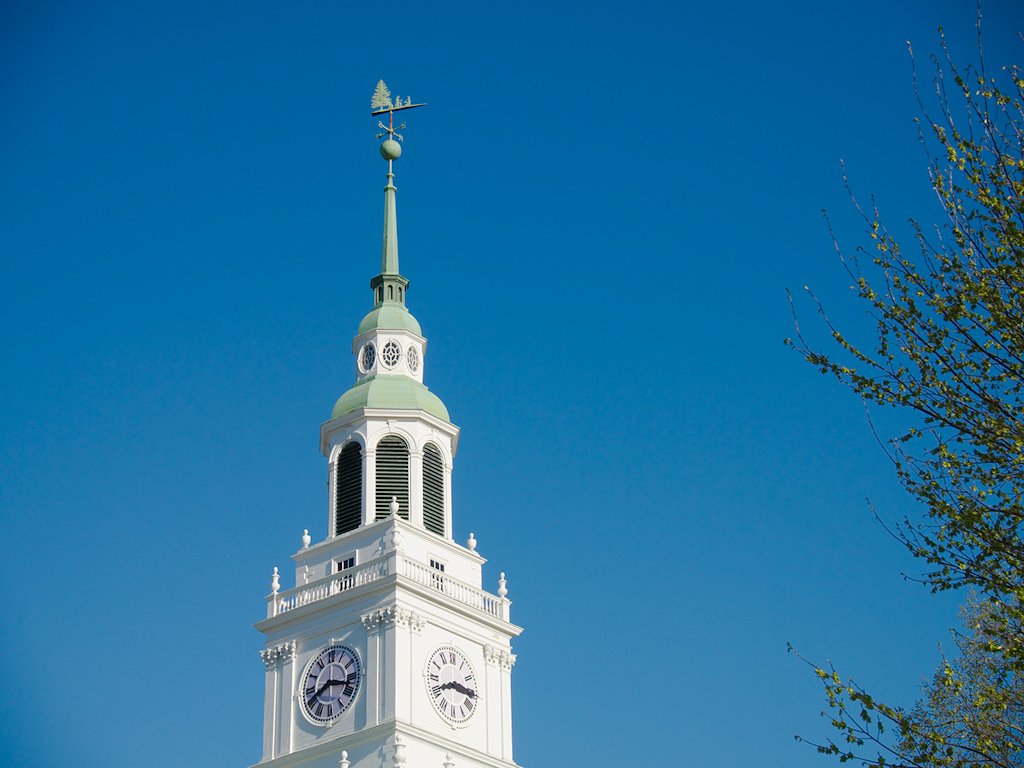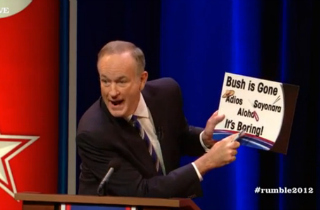|
Member's Blog
Blogs
Written by
Wednesday, 24 October 2012 23:40
We’re just a couple of weeks away from the 2012 U.S. presidential election and, as the respective campaigns of President Barack Obama and Republican nominee Mitt Romney heat up, the use of social media has never been more important, both in raising awareness of policies and targeting potential voters. And for both candidates, here’s a couple of very important stats: 82 percent of U.S. adults now use social media, and 88 percent of those are registered voters. But can platforms such as Twitter and Facebook be used to predict voting outcomes? This infographic from StateTech Magazine takes a closer look.
Written by Malek
Tuesday, 23 October 2012 23:09
DOHA — I'm currently on my way from New York City to Tanzania, where I'll visit "the best hotel in the world" and some lesser-known game reserves in the southern part of the country. After a 12-hour flight from JFK International Airport, I've spent the last six hours in Qatar Airways' premium terminal at Doha International Airport, and there's almost nothing to do here but eat. Eating has pretty much been the theme of my trip since I arrived at JFK last night around 9 p.m. It's my first time flying business class, and I'm quickly realizing that one of the biggest differences between a coach ticket and a business class ticket is the food. First there was the buffet in the Admirals Club at JFK's Terminal 8, which featured everything from roast chicken to pasta salad even though it was nearing midnight by the time I left. And from the moment I sat down on the first leg of my flight on Qatar Airways, I was plied with food. Dinner, which was served around 1 a.m., was a five-course meal that included an amuse bouche and cheese course. The airline is known for its food and service — it was recently named the world's best airline by Skytrax — but I still didn't actually expect to enjoy the taste of my airplane meal. Now I'm Qatar Airways' holding pen for business class travelers, and it's pretty impressive. The expansive room has several seating and rest areas, as well as a business center, kids' playroom, and clinic. There are no blaring speakers, either — an airline employee walks around the entire center and quietly informs travelers every time a flight starts boarding.
Written by Malek
Saturday, 20 October 2012 16:17
Social networking seems like a very new phenomenon and, certainly for the younger generation, it’s hard to imagine a world without Facebook and Twitter. But social isn’t (and never was) just these two platforms – in fact, it actually predates both of them by over thirty years. Yep. The history of social media is, essentially, the history of the internet, and you will find its roots in email, usenet, the world wide web, blogs and (gasp) AOL. Fast-forward to 2003, and MySpace and Friendster were *still* all the rage. True, it wasn’t until Facebook (2004) and Twitter (2006) came along that social media really began to change the world, but its foundations can be discovered a lot further back in the timeline. And in ten years from now, unthinkable as it might seem today, it’s inevitable that both of these platforms will have been superseded by something else, too. Such is the nature of the beast. This infographic from Copyblogger takes a look at the history of social media.
Written by
Friday, 19 October 2012 22:56
The Princeton Review ranked the Northeastern University School of Law as having the most liberal law students, in its 2013 edition of the “Best 168 Law Schools,” which was released last week. The Princeton Review surveyed 18,000 students attending the 168 law schools to decide a number of titles, including the schools with the “best professors,” “best classroom experience,” and “best career prospects.” To determine whether a school was liberal or conservative, students were asked the following question, “If there is a prevailing political bent among students at your school, how would you characterize it?” Answer choices were: very liberal, liberal, middle of the road, somewhat conservative, very conservative. The Vermont Law School came in second, and American University ranked third. The Ave Maria School of Law in Florida was named the law school with the most conservative students. Among other rankings by the Princeton Review, Simmons College offered the best opportunities for women among business schools. The Massachusetts Institute of Technology business school ranked the toughest to get into. The Yale Law School (not Harvard) ranked as the toughest law school to get into. Liza Hays, a third-year student at the Northeastern School of Law, said she used to work for MoveOn.org, a public policy advocacy group that is considered very liberal. But at Northeastern, she leans to the right. “I feel conservative at Northeastern,” Hays said. “And in the general population I’m liberal.” Daniel Medwed, who teaches criminal law at Northeastern, said he has taught at two other law schools, one in New York and the other in Utah, and that Northeastern students are by far the most progressive. “[It’s] really refreshing and exciting as a teacher,” he said. Medwed said at his previous schools there were “pockets of progressive students,” and he is pleased with the number of forward thinking students at Northeastern who care deeply about public interest law. Many of his students are interested in pursuing careers in the non-profit world, he said. “What’s wonderful about Northeastern and what attracted me to work here is the public service aspect,” Medwed said. “A large number of students are committed to serving the public interest.” Audai Cote, who is originally from Revere, said the political bent at the Northeastern School of Law is reflective of Massachusetts in general, he said. “It’s almost a smaller representation of Boston,” said Cote, who is a first year student. Cote said he is socially liberal but fiscally conservative, and that he usually does not talk politics while at school. He thinks the Princeton Review ranking is strongly tied to the substantial number of LGBT students at Northeastern. Sarah Young, a third-year student, agreed.
Written by
Sunday, 14 October 2012 23:22
Selection processEach application receives an academic index score, which is based on GPA and standardized tests. A low score is usually a dealbreaker, but still all applications are considered. Each application will be read by 2-3 readers, who recommend either "admit," "deny," or "possible," sometimes qualified with "strong" or "leaning." Readers also rate each candidate out of 10 for academic and personal qualities, which take into account things like socio-economic background. "You expect it to be more numbers driven than it is, but the message we always got was to make sure we consider everything else in the application." Reading an application takes 10 to 15 minutes. "You're supposed to read 25 to 30 in a day, but that's tough when starting out, and they encourage you to do quality reads. There's a high degree of subjectivity, at least in the first read, but that's what the second and third read are for. The probability that you get 2 people in a bad mood is ... lower than the probability that you get one person in a bad mood." And don't believe what they tell you about early admission. "It's much easier to be admitted during Early even though most schools tell you it's just as competitive, it's simply not true. That's standard administrative rhetoric, but it is much more difficult to be admitted during regular. We've already admitted 30 to 35 percent of the class Early. When you first start reading apps you might think one is great, but reading the same app later after 600 others then that kid no longer seems as stellar." "There's a big push to admit or deny." But some applications end up on the waitlist—and about 10 percent of these are eventually accepted. "Some are placed on the waitlist for political reasons, say a legacy will be waitlisted because they don't want to deny outright."
Written by
Thursday, 11 October 2012 23:46
Did you know that almost nine in ten people (86 percent) may leave a website when asked to register or create an account? Lengthy forms and password fatigue are cited as the main issues, but there’s a simple solution: social logins. By allowing your visitors to connect via Facebook, Google and Twitter, you can dramatically increase your the user conversion rate – and experience – on your website. This infographic from Janrain takes a closer look at the registration challenge for brands and web developers.
Written by Malek
Sunday, 7 October 2012 22:19
Fox News host Bill O’Reilly began Saturday evening’s “Rumble in the Air-Conditioned Auditorium” with Jon Stewart by delivering an opening speech that blasted President Barack Obama‘s spending record, liberals who still blame President George W. Bush for America’s troubles, and people like Sandra Fluke who want “more entitlements.” O’Reilly started his speech by correcting Mitt Romney‘s “47 percent” remarks about people who are “dependent on government,” noting that the figure is about half of that. “About 20 percent of us are slackers,” he said. “It’s a growing industry. And that is what the election is all about…. We are spending an enormous amount of money on 20 percent who, for whatever reason, ‘Eh, we’re just not going to cut it. We’re not going to make a living. We’re not really going to do anything. We want our stuff!’” Taking a page out of some of his Fox News colleagues’ handbooks, O’Reilly then used a small poster board to emphasize his phrase that the resultant “DEBT IS BAD.” He then went on to criticize the president for being the “biggest-spending president in history” and for blaming his predecessor Bush for creating the spending problem. “Bush is gone. Adios, sayonara, aloha. It’s boring” he shouted while holding up another poster. “He’s gone. Outta there! It may have been Bush’s fault for the first year, maybe two, but not three-and-a-half.” He then tore into the “poster person for this entitlement society” Georgetown University law student Sandra Fluke who famously testified before Congress that her employer’s health insurance should cover her contraceptive costs. “I left two tickets for Sandra, plus a month’s supply of birth control pills, at will-call,” O’Reilly joked before pulling out another poster board that read: “BUY YOUR OWN!” “We shouldn’t be paying for this. Or a lot of other stuff. That’s why we owe $16 trillion,”
Written by
Saturday, 6 October 2012 19:26
We’re just a few short weeks away from the 2012 U.S. Presidential Election, and suddenly it’s all getting very serious indeed. On Wednesday (Oct. 3), President Barack Obama debated with Republican nominee Mitt Romney at the University of Denver, trading barbed remarks and facts (or “facts”, as some pundits have suggested of Romney) in a heated contest that could decide the next occupant of the Oval Office. But who won? How did Twitter react? What’s the word from the peanut gallery? Salesforce Marketing Cloud partnered with Ignite Social Media to produce this infographic, which attempts to answer the question: who is the real Commander in Tweet?
|







